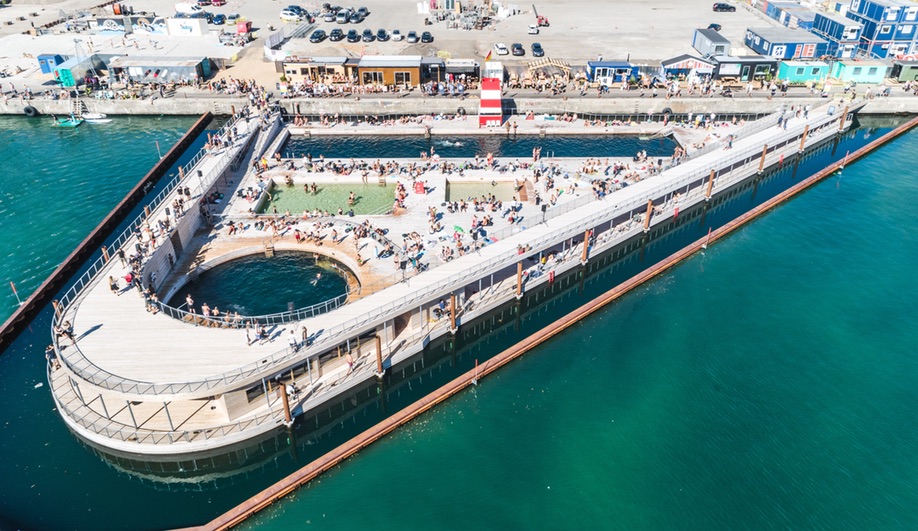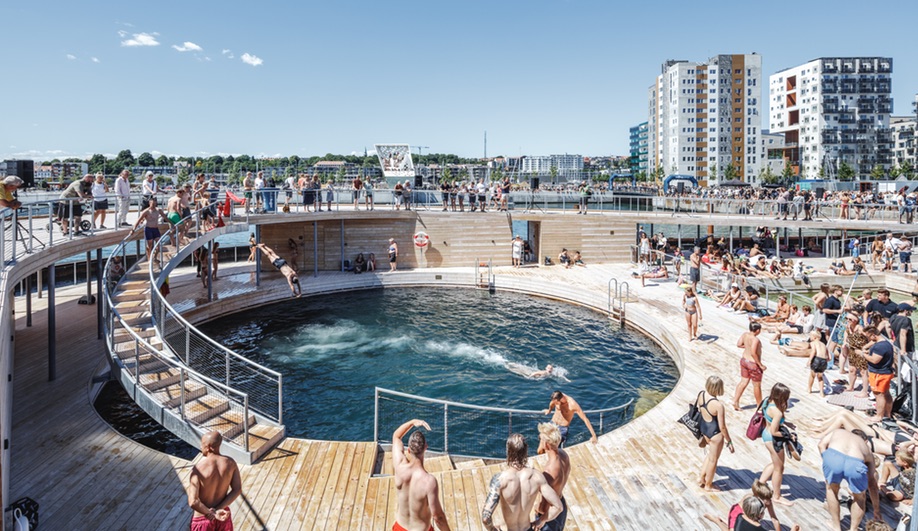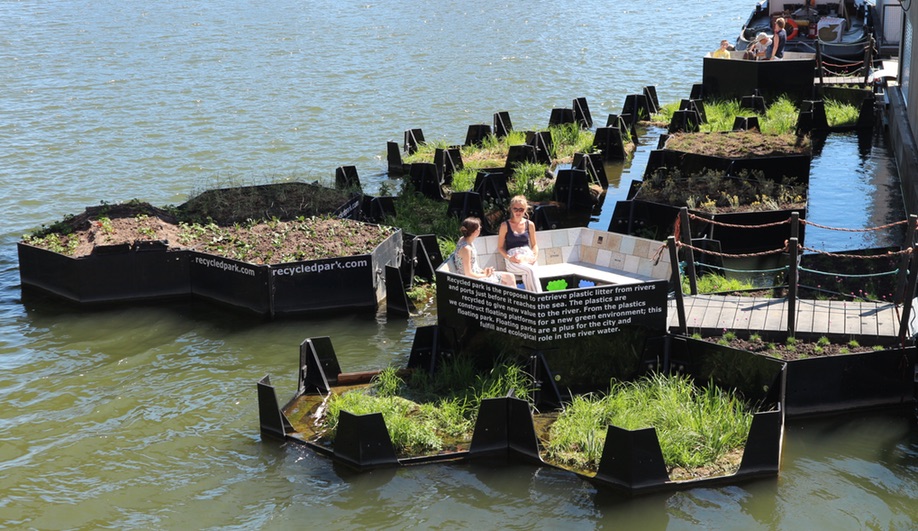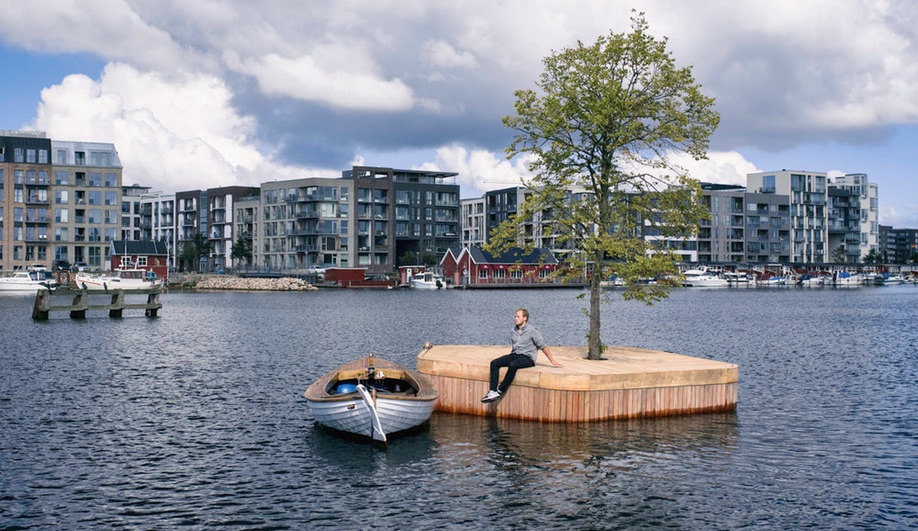
Bruges Triennial pavilion by SelgasCano

The second edition of the Bruges Triennial in Belgium features a number of floating pavilions, including this undulating PVC-wrapped structure from Spanish architects SelgasCano. The brilliant pink walls cast vivid reflections on the structure’s yellow platform, the water around it, and the concrete walls that frame the Copure canal, which runs through the city centre.
Aarhus Harbour Bath by BIG

Bjarke Ingels recently revealed this spectacular new amenity in Aarhus, which can be enjoyed by up to 650 residents at any given time. The massive floating complex includes three pools (dedicated to laps, diving, and children), juts out from the harbour front like an artificial peninsula and is wrapped in an elevated walkway where visitors can take in city views. The project serves as an anchor for a major redevelopment of the area, which will bring more sports facilities, shops, cafes, a hotel and theatre to the waterside.

Acheron 1 by Renato Nicolodi

Another feature at the Bruges Triennial, this Brutal bathing beauty is in stark contrast to SelgasCano’s contribution to the event. The angular concrete monolith features a pair of stairways that lead under water. It’s named for the Greek word achos, which refers to the river of sorrow, a mythical path to the underworld, where the dead cross over under the guidance of Charon, Hades’ ferryman.
The Recycled Park by the Recycled Island Foundation

Environmental group the Recycled Island Foundation collaborated with the local municipality to install this floating park on the New Meuse river in Rotterdam. The park was built using the foundation’s system, which collects plastic waste from the city’s harbour – preventing it from washing out to the North Sea – and recycles it into floating platforms. The modular platforms serve as areas for seating or as planters, with the underside doubling as a habitat for marine life.
London Mastaba by Christo and Jeanne-Claude

Joining London’s Serpentine Pavilion this summer is this floating sculpture by Bulgarian artist Christo. Based on the Mastaba sculpture concept the artist created (along with his wife Jeanne-Claude, who died in 2009) for Abu Dhabi in 1977, the installation features 7,506 multi-coloured barrels stacked on a floating platform in the Serpentine Lake. Measuring 20 meters high by 40 meters long, the London Mastaba is considerably scaled down from the original concept, which would have comprised over 410,000 barrels.
CPH-Ø1 by Marshall Blecher and Fokstrot’s Magnus Maarbjerg

Life in the big city means it can be hard to find a moment of solitude. Even in your own home, the buzz of urban activity can wash through the walls, making you feel as you are never really alone. Copenhagen’s answer to this is CPH-Ø1, an experimental public space that is just big enough for one and can only be reached by boat or a swim. The 20-square-metre “Parkipelago” features a single linden tree at its centre, for those looking to connect with nature. CPH-Ø1 is in use in Kronløbsbassinet at Nordhavn until the end of August, and in September moves to Enghave Brygge, where it will remain through October 2018.
